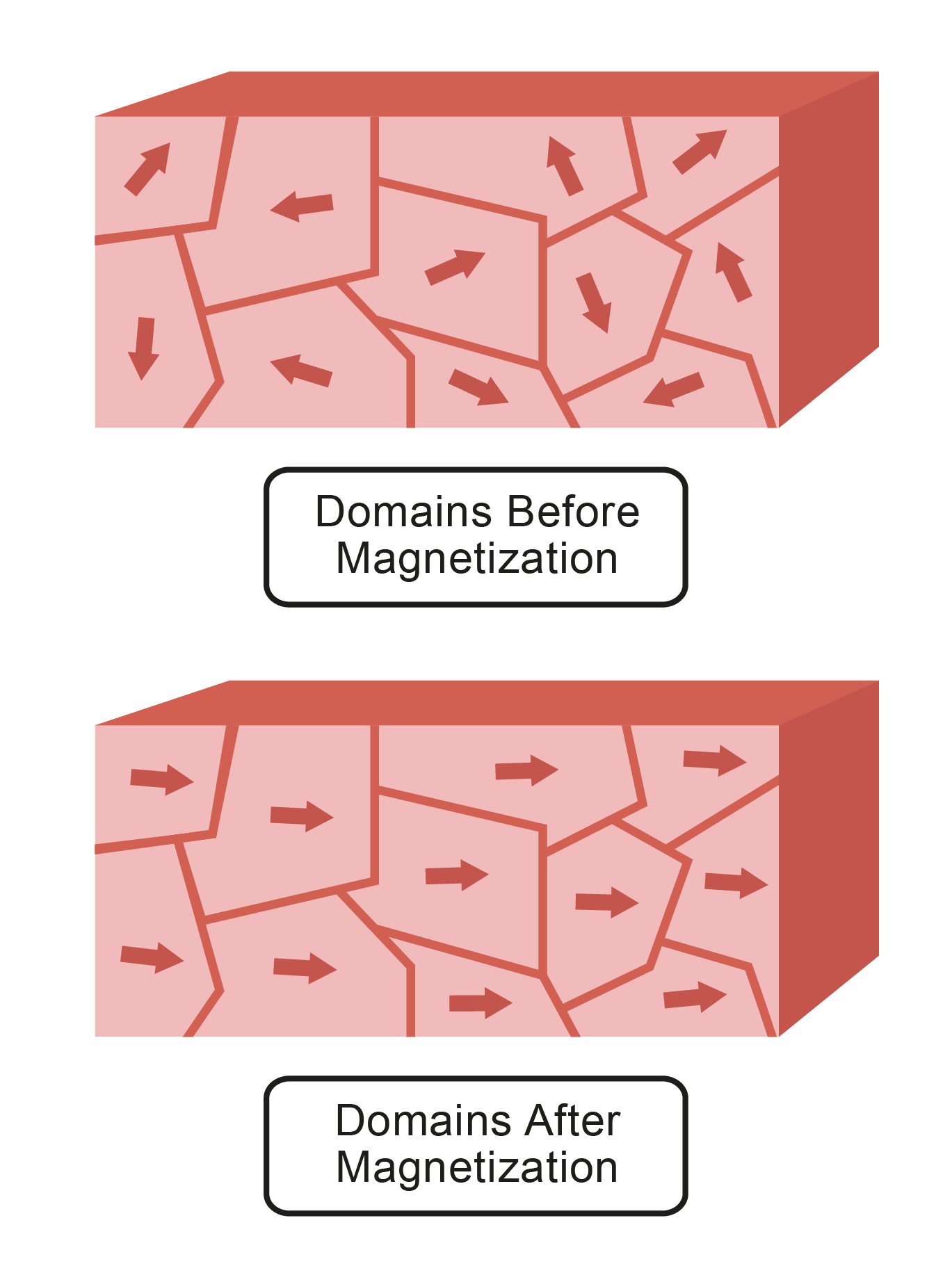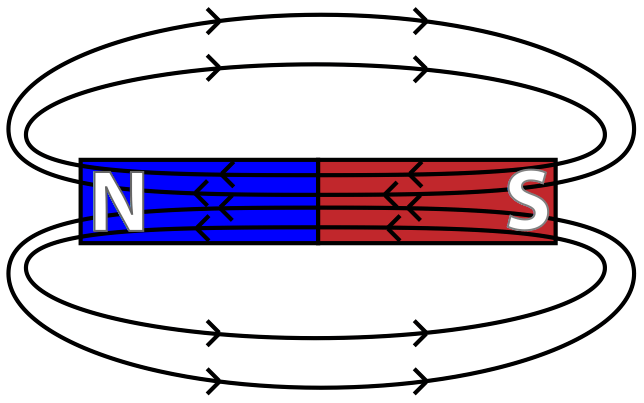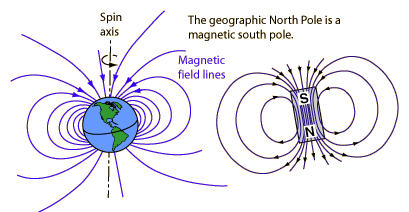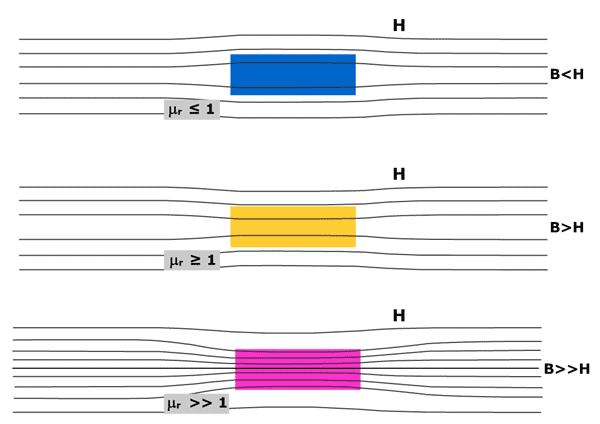Magnetism
Magnetism is a force caused by moving charges
Magnets are dipoles (they have a north and a south)
Like poles repel, opposite poles attract
Magnetic domains are clusters of atoms with electrons spinning in the same direction
Random domains: no net magnetic field
When many of the domains line up, you get a net magnetic field, creating a strong magnet

Magnetic Fields

- Units a Tesla (T)
Magnets are polarized (each has two opposite ends)
End of a magnet that points toward the geographic north pole of the Earth is called the north pole of the magnet
There are no magnetic monopoles
Magnetic Field Lines
Magnetic Field Lines make closed loops and run from north to south outside the magnet
- Magnet field lines show the direction the north pole of a magnet would tend to point if placed in the field


The Compass
The Earth is a giant magnet
The Earth's magnetic north pole is located near the geographic south pole, and vice versa
- A compass's north magnet pole points toward the Earth's magnetic south pole (geographic north)
A compass lines up with the net magnetic field

Magnetic Permeability
Magnetic permeability refers to the ratio of magnetic field strength induced in a material to the magnetic field strength of the induced field

Free space has a constant value of magnetic permeability that appears in physical relationships

The permeability of matter has a value different from that of free space
Highly magnetic materials (such as iron) have higher values of magnetic permeability
Magnetic Dipole Moment
The magnetic dipole moment of a magnet refers to the force that a magnet can exert on moving charges
Can be thought of in simplistic terms as the relative strength of a magnet
Compare the magnetic dipole moment of a hydrogen atom to the magnetic dipole moment of a highly magnetized iron bar
Fe > H
